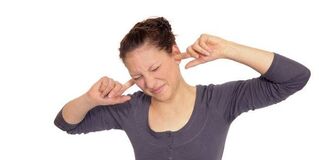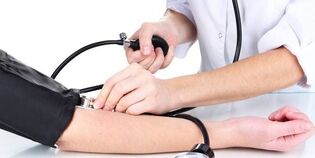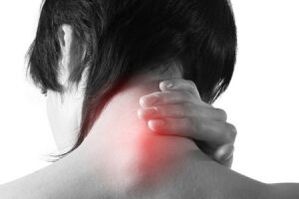The diagnosis of osteochondrosis, in my opinion, is not as tragic as circulatory encephalopathy and vegetative-vascular dystonia. Yes, "osteochondrosis" refers to completely different pathologies in us and abroad. Abroad - these are mainly severe skeletal lesions in children. It is enough to complain to us about the pain in the neck, to do an X-ray or MRI (where you are sure that degenerative changes are found) - this is the diagnosis of osteochondrosis.
The main causes of back pain
In most cases, the patient is diagnosed with osteochondrosis with low back pain. But in fact the reasons are different:
- Non-specific back pain
Caused by muscles, ligaments, tendons. Does not require MRI. This is the most common cause of low back pain and the most affordable option, because doctors generally prescribe a fairly appropriate therapy - non-steroidal anti-inflammatory drugs, muscle relaxants, exercise therapy. It should be noted that completely different medications are needed for chronic pain lasting more than 3 months. - The cause of sad back pain. Are you surprised? And if an MRI reveals a hernia and back pain, isn't that the cause of the hernia pain? In most cases, no. In addition to pain with a hernia, there should be other symptoms: weakness of certain muscles, decreased tendon reflexes, impaired sensitivity in the innervation zone of the root. There are no these symptoms - you can forget about the hernia as the cause of pain.
Serious causes other than pain and other symptoms are excluded on the basis of MRI.
Osteochondrosis is worse when diagnosed with completely different complaints: increased blood pressure, dizziness, weakness, anxiety, headache. What should we exclude in this situation?
- Tension headache and migraine.
Not related to your neck. Healing the neck means going the wrong way, bringing the chronicity of your pain closer. Tension headaches can be accompanied by muscle tension, but still it is a tension headache, not osteochondrosis. - Dizziness
Not because of the sharp blues. The real causes of dizziness are: dizziness in a benign paroxysmal position, vestibular information damage, vestibular migraine, Meniere's disease, vestibular paroxysm, cerebral and trunk pathology, psychogenic dizziness, iron and vitamin B 12 deficiency, heart disease, lung disease. - Arterial hypertension.
Sometimes when a patient's blood pressure rises, I come across the idea that his neck and, of course, his neck veins should be checked. Did you find arterial hypoplasia, tortuosity, degenerative changes in the cervical spine? Let's blame them for the increase in pressure. This is absurd. In fact, there is no connection between increased pressure and the neck. - Anxiety Depressive Diseases.
Do you have anxiety, dizziness, weakness and fatigue, sleep disorders? Let's have my neck again. Instead of consulting a psychiatrist with antidepressants and tranquilizers, the poor patient receives physiotherapy, massage and some kind of homeopathy. - Iron deficiency, thyroid dysfunction.
Always remember when complaining of fatigue, weakness, loss of concentration, dizziness, headache.
Our bodies have been changing for years. The baby's skin is soft and elastic. At the age of 30, no matter how we apply cosmetic procedures, it is no longer the case. Think of a sailor who spends his whole life sailing: his skin is rough and wrinkled. The same thing happens in our spine. In most cases, protrusions and hernias are natural changes associated with age. If there are many motivating factors in your life, such as carrying a heavy load, then you are more likely to get a large hernia.
Numerous studies have found that disc protrusions occur in healthy people: at age 20 - up to 40% of those examined (remember, these are patients without back pain), at age 70 - up to 90%. In addition, the severity of changes on MRI is not related to the degree of pain syndrome: with a large hernia, there may be no pain at all, and with small protrusions, the patient may have severe pain (the cause is something other than protrusions).
Does a hernia never hurt?
Of course! In about 1-4 percent of cases of low back pain. How do you know that? Hernias cause not only pain, but also other diseases: sensitivity disorders, changes in reflexes and sometimes a decrease in muscle strength. All this is determined by a competent doctor during a neurological examination.
If the muscle strength is sufficient, the reflexes when hitting with a hammer are symmetrical, not weakened, there are no sensory disturbances, then back pain is very unlikely to cause a hernia.
In addition, a certain level of compression of the spinal cord (if you read the results of MRI, you will see that it is described at the level of protrusions and hernias, for example, C3-C5 or L5-S1), the hernia is not reduced sensitivity everywhere, but in certain segments and reflexesstrictly defined changes. The neurologist correlates the lesion level with MRI data.
Classification of symptoms in cervical osteochondrosis
The development of this disease sometimes occurs before the age of 30-35, so the symptoms of the disease can also occur in adolescence. The symptoms of cervical osteochondrosis are discussed in detail below, the disease has become a real problem in the modern world. Working without sitting, staying in front of a computer for a long time has a negative impact on a person's health and well-being. All the symptoms of cervical osteochondrosis are associated with several systemic disorders:
- In advanced cases, there are signs of compression, the integrity of the spinal cord located in the spinal canal is violated.
- Pathological nervous process can affect the peripheral system. Spinal cord roots located near the centers of deformation of bone and cartilage tissue are adversely affected.
- In some cases, the vertebral arteries constrict. These blood vessels supply nutrients and oxygen to the brain cells. Violation of these processes leads to a sharp deterioration of human well-being.

It is known that one of the first signs of the disease is cervical back pain. At first it passes quickly, it is periodic, but then it becomes chronic. The main localizations of pain:
- occipital muscles (strengthened by turning the neck and bowing);
- shoulder area;
- neck.
Depending on the location of the damage, it can cause pain in different ways, unpleasant sensations can be sharp, fiery, intermittent, painful and persistent. Over time, head movements become more difficult due to tension in the neck muscles. If an artery is constricted, sometimes a cervical migraine is observed (weakening of the blood supply, headache with lack of oxygen).
Nausea
In some cases, the blood vessels in the circulatory system constrict, which provides oxygen and nutrients to the human brain and inner ear. For this reason, nausea occurs with osteochondrosis. This symptomatology, as a rule, is accompanied by anorexia, which leads to weight loss, lack of necessary nutrients. In advanced stages, the disease can cause vomiting when turning the head, walking or bending. This is due to the lack of blood supply to the middle ear, where the center of balance is located.
Neurological symptoms of cervical osteochondrosis
Some manifestations of the disease can not be immediately attributed to the characteristic symptoms. You need to know what symptoms of cervical osteochondrosis to ignore, such as shortness of breath. If this section is damaged, phrenic irritability syndrome can develop. The patient has difficulty breathing, lack of oxygen, which leads to shortness of breath and even severe suffocation.
This manifestation of the pathology is often accompanied by snoring, which intensifies if you take a restless position during sleep. This causes a person not to rest at night, to wake up with a general feeling of weakness, exhaustion, tiredness and suffocation. If left untreated, this condition can lead to memory impairment, decreased concentration, and irreversible changes in brain tissue.
Vestibular signs
Another aspect of how cervical osteochondrosis manifests itself is vestibular symptoms. The brain is supplied with all the necessary nutrients through the vertebral arteries. If cervical chondrosis develops in which the inner ear is damaged, the patient develops tinnitus and ringing. In some cases, these symptoms are compounded by hearing loss or hearing loss.

A lump in the throat
In some cases, the disease manifests itself with only one symptom - pharyngeal. With osteochondrosis of the cervical spine, there is a feeling of a lump in the throat, sweating, itching, dryness, difficulty swallowing. These manifestations are associated with poor conduction of nerve endings from the spinal cord. A lump in the throat is not a specific symptom of chondrosis; may indicate a tumor or an inflammatory process. When this symptom appears, you must consult a doctor.
Visual signs of cervical osteochondrosis
Symptoms of cervical spine chondrosis can vary, but the most common are visual acuity disorders. The supply of visual analyzers occurs through the carotid and vertebral arteries. If there is a decrease in blood circulation due to the compression of the latter, the decrease in vision, which does not improve with the wearing of glasses, begins. Cervical osteochondrosis - symptoms:
- low blood pressure;
- floating, vibrating points;
- atherosclerosis of blood vessels in the brain;
- violation of attention to the subject;
- Shroud, fog in front of your eyes.
One of the typical symptoms of decreased vision, constriction of blood vessels by the vertebrae, and circulatory disorders will be a lack of development when wearing glasses or doing special exercises. Only timely treatment of the underlying disease (before irreversible tissue damage) will help to change the situation.
Arterial signs

The spine plays an important role in the human body, so any disease affects many systems. Cervical osteochondrosis has certain arterial symptoms that indicate this disease. These include sudden loss of consciousness. This is the most unpleasant and dangerous symptom of this disease. This occurs when blood flows temporarily through the blood vessels of the brain due to circulatory disorders.
Severe arterial spasm occurs due to the reaction of deformed bone processes to irritation of nerve endings. If your friend has osteochondrosis of the cervical spine and is unconscious, he should lie down to raise blood flow from the muscles and increase the flow to the brain, and raise his legs to a small height. After that, people tend to recover faster.
Blood pressure instability is another symptom of this disease. Doctors can prescribe spasmodic indications when the blood supply is disrupted. This is not a specific symptom of chondrosis, but corresponds to the general picture of the disease. The pressure may drop or rise sharply. A person feels that his condition is deteriorating, so he must make peace.
Dizziness
Earlier it was explained that loss of consciousness sometimes occurs with this disease. This is especially true when blood flow to the brain is very difficult. More often, patients with cervical osteochondrosis feel dizzy. This is a common symptom that accompanies all patients with this disease. This phenomenon is spontaneous. This condition is caused by a decrease in the amount of oxygen supplied to the inner ear. It is located in the human brain and is responsible for the sense of balance. Dizziness occurs in the following cases:
- to turn one's head, neck;
- Suddenly you get out of bed.

Temperature in osteochondrosis
In some cases, pathological processes spread between the structures of the cervical segment of the spinal cord. This disc protrusion occurs with canal stenosis. Temperature in osteochondrosis is the body's response to these pathologies. The same reaction is possible with vertebral artery syndrome. This is a common occurrence in osteochondrosis in the later stages of the disease. Therefore, fever is a non-specific symptom of the disease.
This symptom will not necessarily be, the body's thermoregulation may be normal. If you experience persistent pain in the back of your head, shoulders, or neck, and if you experience complications when you turn or bend your head, you should see a specialist and be examined. Lack of treatment will inevitably worsen the situation and reduce the level of comfort in life.
Learn more about what to do when diagnosed with cervical spine osteochondrosis.
Symptoms of cervical osteochondrosis
Cervical osteochondrosis is a damage to the vertebral discs of the cervical spine, resulting in degenerative-dystrophic changes. The main reason for its development is a violation of the normal course of metabolic processes, which leads to a violation of the structure of vertebral bodies and cartilage discs. In the case of localization in the neck, the pathological symptoms are largely determined by the constriction of large vessels. Treatment methods are selected depending on the stage, the specificity of the course, the severity, the main symptoms.
Features of the disease
The cervical form is the most dangerous type of osteochondrosis: the brain leads to circulatory disorders, because the spinal artery passes through this area - one of the largest vessels that provide the brain with the necessary substances and oxygen.
Vertebral displacement, abnormal changes, and proliferation of bone and fibrous tissue disrupt normal vascular function.
The specificity of the symptoms of osteochondrosis in this section is determined, among other things, by one of the structural features of the cervical vertebrae, which are closer to each other. As a result, any change in one segment leads to the failure of the entire department.
Depending on the stage Clinic
Cervical osteochondrosis goes through four stages of development. How does it manifest itself in each of them?
- Stage 1. It is characterized by the appearance of primary disorders in the stability of intervertebral discs. Symptoms are mild or absent. Unexplained pain and local muscle tension are possible.
- Stage 2. The disc protrusion begins, the gaps between the vertebrae decrease, and the ring fibrosis collapses. In many cases, pain occurs as a result of compression of the nerve endings - mainly in the form of dots. When they return, they intensify by bending their necks. Decreases tone, weakness is often visible.
- Stage 3. The final process of destruction of the fibrous ring leads to the formation of hernias. This stage is characterized by a significant deformation of the spine. Increased pain and fatigue occur against the background of sensitive disorders and limited mobility in the affected area.
- Stage 4 is the most difficult. Severe pain syndrome manifests itself with attempts to move, which significantly limits the mobility of this department. Sometimes the pain decreases, but this does not indicate an improvement, but an increase in the size of the bone growths, which significantly limits movement. They often cause disability.
Symptoms of cervical osteochondrosis
Predominant symptoms of osteochondrosis in the cervical spine:
Pain is the main symptom
- pain in cervical, occipital, shoulder, arms;
- restriction of movements, crushing in different turns, neck bending;
- weakness in the hands;
- pain in the left side of the chest, radiating to the appropriate arm;
- burning in the intercapular zone;
- recurrent headaches;
- weakness;
- dizziness (can lead to loss of consciousness with severe cervical osteochondrosis);
- coordination of movements is disturbed, which is mainly reflected in walking;
- hearing loss, ringing in the ears;
- decreased vision;
- sore throat;
- poor dental health;
- weakening or muffling of sound;
- Snoring is the result of tension in the neck muscles.
The symptoms of the cervicothoracic type are similar to the symptoms of cervical osteochondrosis. O:
- asthenic syndrome;
- dizziness and headache;
- periodic pressure fluctuations;
- flies flashing in front of the eyes;
- pain in the shoulder girdle and arms;
- muscle weakness;
- numbness, tingling, coldness of the fingers;
- chest, heart pain;
- nausea;
- tongue, face;
- dental problems;
- A feeling of current flowing through the arms while trying to bend the neck.
Syndromes
Symptoms of cervical osteochondrosis are not considered typical. Which of them is most expressed depends mainly on the specific target. Many manifestations can be mistakenly associated with other pathological conditions. Therefore, it is often the case that the wrong treatment is prescribed. The complex of symptoms is divided into the following groups:
- radical;
- vertebral artery syndrome;
- Irritant-reflex syndrome.
Radical Syndrome
The second name is cervical sciatica. The syndrome develops as a result of compression of the nerve endings in the neck. The pain is lowered from the neck, given to the shoulder blades, and transmitted to the fingers along the lower wrist along the shoulder. It often appears in this situation:
- creepy feeling;
- tingling of hands, wrists, fingers;
- dough.
Manifestations also vary depending on the area of the lesion. If the ends of the central nerve are affected, the lobe extends to the head, middle, and index fingers. When the ends of the brachial nerve are compressed, it is affected by the little finger and ring finger.
Irritative-reflex syndrome
Acute pain in the cervical-occipital region occurs during movement after a static position: after sleep, a sharp dizziness when sneezing becomes a symptom. Often the pain spreads to the shoulder and chest.
Vertebral artery syndrome
Symptoms of cervical osteochondrosis include:
- throbbing or burning headache (paroxysmal or persistent in nature), extending to the temporal region, dark, occiput, superxillary arches;
- Increased anxiety during certain activities or after a long period of restlessness;
- general weakness;
- nausea;
- loss of consciousness;
- hearing problems;
- vestibular apparatus disorders;
- eye pain;
- blurred vision.
Heart Syndrome
With the onset of this complex of symptoms of cervical osteochondrosis, a picture almost resembles angina pectoris, which often leads to incorrect treatment. Muscle spasms and spasms in the heart area are most likely a reflex response to compression of nerve endings in the lower cervical region. Cardiac syndrome is a result of irritation of the phrenic nerve (fibers lead to the pericardium) or the large pectoralis muscle:
- pains appear suddenly, last a long time;
- aggravated by sharp movements of the neck, coughing, sneezing;
- tachycardia and extrasystole are possible;
- The pain does not stop after taking a coronary dilator;
- There are no signs of circulatory disorders on the ECG.
Exacerbation of the disease
Symptoms of cervical osteochondrosis in the exacerbation phase are:
- increasing pain and its radiation to the shoulder blades, intercapular zone, arms, shoulders;
- difficulty moving the shoulders, torso, arms, sometimes breathing (breathing and exhalation);
- pain syndrome often resembles a heart attack or intercostal neuralgia;
- When pain appears in the right hypochondrium or iliac region, the clinic resembles the manifestations of gastritis or cholecystitis;
- headaches are prolonged, imbalance, impaired vision and hearing;
- skin trophism is disturbed in the innervation zone, tingling, numbness, dryness, paleness, burning, coldness appear;
- increases the tone of the cervical muscles;
- weakness, lethargy, nervous tension, anxiety, emotional instability appear;
- Possible sleep disorders, memory disorders and concentration problems.
How is the disease diagnosed
The leading methods for the diagnosis of cervical osteochondrosis are:
- radiography;
- magnetic resonance imaging;
- computed tomography;
- Doppler ultrasound;
- duplex scanning.
The last two methods are used to check the condition of the cervical veins.
Symptoms of cervical osteochondrosis
The cervical spine contains a large number of blood vessels that provide nutrition to the brain. Therefore, any problem with the neck, including cervical osteochondrosis, can lead to a deterioration in the blood supply to the brain. Thus - and the most common symptoms of cervical osteochondrosis:
- regular headaches and dizziness,
- occasionally - sudden fainting,
- violation of coordination of movements, the appearance of a "gap" of gait,
- hearing loss, noise in the ears,
- visual impairment,
- appearance of dental diseases,
- Appearance of hoarseness in voice, change of timbre, weakening,
- snoring,
- Persistent sore throat.
How to treat this disease
Osteochondrosis of the cervical spine, symptoms and treatmentdepends on the patient's condition, the severity of the disease, the nature of the damage to the cervical vertebrae.
- Acute hospitalization and medication may be required.
Generally used analgesics, novocaine muscle blockade, muscle relaxants, muscle spasms; chondroprotectors for nourishment of cartilage tissue; sedatives that calm the nervous system, B vitamins that increase neuromuscular permeability.
Treatment of cervical spine osteochondrosis is always long-term and should be comprehensive.
- In remission, in the absence of acute symptoms, physiotherapy methods (electrophoresis, ultrasound, etc. ) are widely used, non-traditional procedures such as physical therapy, massage, as well as acupuncture are required.
There are many conservative treatments for osteochondrosis that can stop the disease from progressing. However, each disease needs an individual course of treatment, taking into account the stage of the disease, the characteristics of the organism, sex and age.
Purpose of treatment of cervical osteochondrosis:

- Eliminate pain and swelling at the site of inflammation.
- Relaxation of tense neck muscles.
- Release of compressed nerve roots.
- advanced blood circulation.
- Activation of metabolism.
- Improving the nutrition of intervertebral discs.
Targeted comprehensive treatment can prevent protrusions and intervertebral hernias.
Cervical spine osteochondrosis, its symptoms and treatmentshould not be started and treatment should be started in time to prevent serious complications of the disease.






















